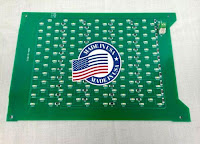An expert panel discussion at this year’s Manufacturing Automation and Robotics Summit explored what role physical technology has in creating intelligent, connected factories of the future.

UK manufacturing businesses are having to respond to the convergence of powerful trends in labour supply, supply chain consolidation and optimising the balance between quality and cost – a situation in which industrial automation lies at the very centre.
The sold-out Manufacturing Automation and Robotics Summit tackled these challenges head-on, helping the 80 senior manufacturing executives in attendance to define:
- What parts of their production process are best suited to automation, and what kind
- Where their industry peers are seeing the greatest automation opportunities and successes
- How the technology landscape has evolved, and continues to, and how best to take advantage
The summit took place at Aston Villa Football Club in Birmingham and was deftly chaired by Duncan McFarlane, Professor of Industrial Information Engineering at University of Cambridge’s Institute for Manufacturing (IfM).
McFarlane also chaired the morning expert panel discussion comprising:
- Steven Carter – Digital Manufacturing Integration Lead, Rolls-Royce
- Ed Preston – Global Automation Leader, GKN Aerospace
- Alan Newman – Advanced Manufacturing Engineering & Technical Director, De La Rue
What are the most exciting innovations you’re seeing?
Steven Carter: The disruption generated by combining the power and affordability of data analytics and the insights it provides, in conjunction with low-cost robotics and open-source software.

Ed Preston: The new business models being created thanks to the availability of powerful yet affordable connectivity and automation, both from established manufacturers and disruptive start-ups.
Alan Newman: The significant reduction in the cost of industrial automation and robotics which means the technologies are no longer only applicable for high-volume operations. Also, how automation and robotics is becoming ever-more seamlessly and invisibly integrated into our personal and professional lives.
What are the common mistakes around deployment?
SC: Projects being too short-term in focus, rather than looking far enough out, and not considering how it might impact your upstream/ downstream processes such as part validation or quality assurance. Also, not considering the human factors – something which often isn’t included in the technical specifications. How will this impact the individuals? Would spending a ‘day in the life of’ one of your production operatives change your approach?
EP: Project teams only looking at the outward cost of the robot or automation system, rather than the total cost of ownership which may include changes to the surrounding infrastructure (such as strengthening the foundation beneath a machine weighing several tonnes) or the hiring of a crane to move it into place. The cost of the actual technology may have come down significantly, but the cost of actually integrating and maintaining it hasn’t necessarily. If you’re struggling to justify the business case, you need to look high and low for the potential benefits, i.e. improved worker health & safety, reduced defects, lower tooling costs.
2711-NL2 Backlight Replacement for Allen Bradley Panelview 900 |
AN: Too much focus being placed on the hard, financial gains, rather than the ‘softer’ benefits such as employee satisfaction levels and workplace culture. Both of which are absolutely vital and the key to having a successful, productive, innovative, flexible, growing business.
How can industrial automation be used as a strategic tool to achieve your business growth objectives, as opposed to being yet another point solution?
SC: Again, spend a ‘day in the life of’ your production operatives. Look at the potential quality, health & safety and operator experience benefits – applicable in both high and low-volume production – and how that adds value to your business. A better experience for your workers will create a significant amount of value-add across the business.

EP: Automation and robotics represent a useful tool with which to not only engage the next generation; but tasks around programming and functionality engineering are also exciting projects for your current workers to become involved with –increasing their motivation and output.
AN: The technologies allow you to maximise your workflow and output within a given space, which means productivity can increase without the need for an expensive factory extension or relocation. Industrial automation can also be a factor in retaining or establishing production in a high-labour cost country.
Should we automate absolutely everything or are there limits?
EP: For every potential implementation or project, ask ‘Will this benefit this process and my business overall in a tangible and timely manner?’. It’s as simple as that.
AN: Guiding every decision should be an understanding that ROI and business improvements – whatever they may be, hard or soft, upstream or downstream – are being delivered and can be sustained.
SC: It would be naive to think you can – and should – automate absolutely anything and everything. You need to put together a robust business case and really drill down into the potential benefits
from themanufacturer.com
